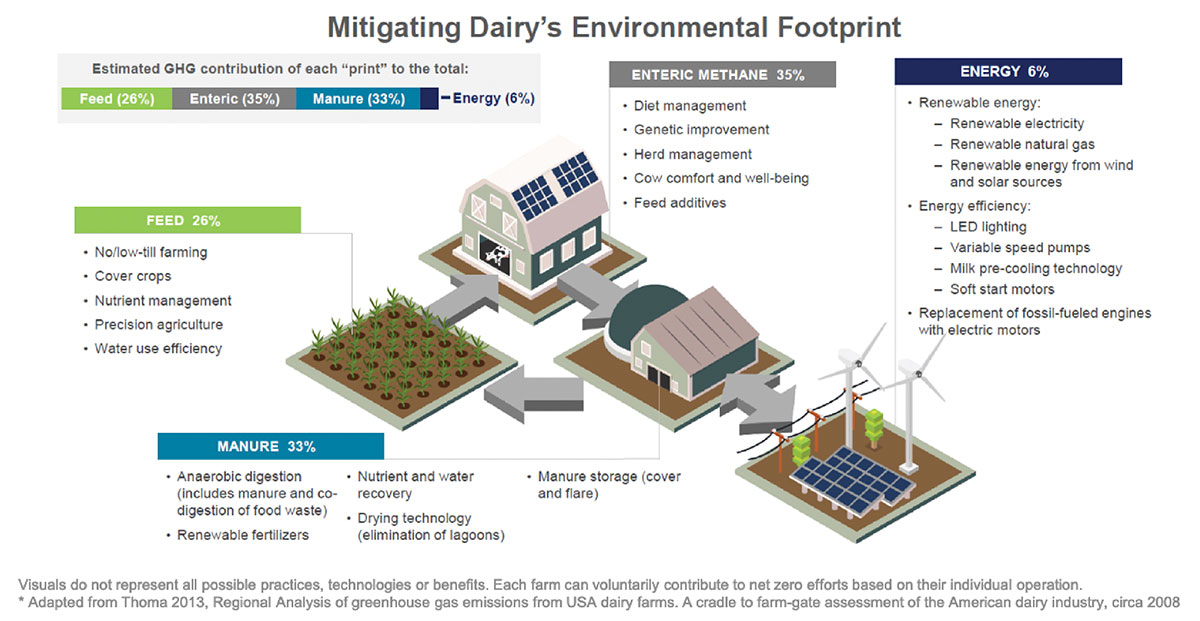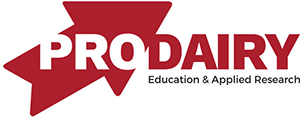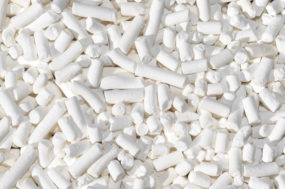The U.S. Dairy Net Zero Initiative (NZI) is a collaboration of dairy organizations to advance research, on-farm pilots, and new market developments to make sustainability practices more accessible and affordable to farms of all sizes. “This is an essential element of an overall 30-year journey to U.S. dairy’s collective 2050 environmental goals,” said Jamie Jonker, National Milk Producers Federation, during a top-rated panel “Sustainability on the Farm and the Net Zero Initiative” at the Northeast Dairy Management Conference. Partners in the effort include Innovation Center for U.S. Dairy, DMI, International Dairy Foods Association, Newtrient, National Milk Producers Federation, and U.S. Dairy Export Council. By 2050, the U.S. dairy industry collectively has goals to:
- Achieve greenhouse gas (GHG) neutrality
- Optimize water use while maximizing recycling
- Improve water quality by optimizing utilization of manure and nutrients
What are the key elements to get to net zero, and will every farm have to do it?
“The goal of the U.S. Dairy Net Zero initiative is for U.S. dairy, from farm to milk processing, to be net zero greenhouse gas (GHG) emissions by 2050. It applies to the industry as a whole and not to individual farms,” said Curt Gooch, Land O'Lakes – Truterra, who was also a panelist. The initiative ensures continued progress in environmental sustainability and competitiveness in a global marketplace. Individual farms can contribute by reducing their cradle (inputs) to farm gate GHG emissions.

Four areas are analyzed to determine a farm's GHG footprint: enteric, feed, manure, and energy.
ENTERIC
“While everyone is waiting for a feed additive silver bullet to substantially reduce enteric emissions, generally the single largest emission source on a farm, improved cattle management that also correlates with increasing margins, can be employed to reduce enteric emissions. The easiest way to think about this is to think about efficiency. The more efficient we manage our cattle, the lower the emissions will be,” Gooch said.
- Optimize the growth of replacement heifers and only raise enough to maintain herd size (assuming no planned internal herd growth). Also, calve heifers as early as possible and reduce the variation around age at first calving to decrease the non-productive period of life, which reduces GHG emissions on a lifetime basis.
- Keep cows healthy and provide a quality barn environment to maximize cow comfort. Healthy and comfortable cows produce more milk per unit of feed intake - increasing feed efficiency decreases enteric methane intensity (methane emitted per unit of milk production). Fewer treated cows means less withheld milk and more milk shipped.
- From a reproduction perspective, strive to minimize the number of days open after the voluntary wait period is over, and strive to get cows bred on the first service. Getting cows bred efficiently means more productive days over a lifetime, thus reducing GHG emissions per lifetime.
FEED
Cows do best when fed high quality forages, and feeding high amounts of quality forages has a lower GHG intensity footprint than feeding lower quality forages and/or less forage in diets. Feed recommendations from panelist Mike Van Amburgh, Cornell University, include:
- Feed the optimum level of protein and phosphorus to reduce the amount of excreted nitrogen (N) and phosphorus (P) and reduce potential nutrient loss from the farm.
- Select diet ingredients that reduce enteric methane intensity (mass of GHG emission per gallon fat- and protein-corrected milk) from cattle by using a nutrition model like the Cornell Net Carbohydrate and Protein System (CNCPS, AMTS, Dalex, NDS) and look for the greenhouse gas emissions predictions. (Each program has a different way of reporting.) These tools can establish an enteric emissions baseline, evaluate feed ingredient options, and track outcomes for the diets fed.
- Talk to a nutritionist about adding Monensin to cattle diets. Monensin improves feed efficiency and thus can reduce methane (CH4) production by about five percent.
To reduce a farm’s Feed Print, Gooch recommends:
- Minimize shrink. Although the costs and impacts of shrink are not well-documented, common sense tells us that when the quantity or quality of forages decreases from harvest to the cow's mouth, it takes more inputs to feed a given number of cows. Minimizing inputs reduces GHG emissions, both from a total emissions and intensity perspective.
- Reduce nitrous oxide (N2O) emissions by capturing more manure nitrogen (N) in crops and reducing purchased fertilizer N. This also reduces carbon dioxide emissions due to the energy used to manufacture and transport commercial fertilizer N.
- Improve N management by calculating the appropriate rate of manure for the crop being grown, improve application timing to increase crop uptake, and ensure that maximum application rates do not exceed N needs. Overapplication of N increases N2O losses per ton or bushel of feed produced and can also impact water quality.
- To capture and conserve soil carbon and save fuel, adopt strip till or even no-till practices if possible.
- Combine manure injection and no-till practices by using low-disturbance shanks to inject manure to conserve carbon (and nitrogen), reduce soil loss, and reduce fuel-based carbon dioxide (CO2) emissions.
- Plant cover crops after corn silage to make use of leftover nutrients and leave as much crop residue as possible to add carbon to soil.
MANURE
Manure is generally the second largest source of cradle to farm gate GHG emissions. Long-term manure storages improve nutrient management and protect water quality but produces methane. Pre-treating manure before long-term storage reduces storage emissions. Currently deployable options include:
- Separate manure solids from manure liquids. Removing manure solids from a long-term storage reduces feed to the microbes that produce methane. Starved microbes equals less long-term storage methane emissions.
- Install a gas-tight impermeable cover to capture biogas. In moderate and cold climates, ensure the biogas is collected and flared. In hot climates, use the biogas to produce renewable electricity (RE) or renewable natural gas (RNG). Covering a manure storage also reduces fuel costs and associated GHG emissions in humid regions because less rainfall mixing with manure results in less material transported and applied to fields.
- Anaerobically digest manure and ensure the biogas is captured and used to produce RE or RNG.
- Consider co-digestion of community substrates, most notably pre- and post-consumer food byproducts and wastes. At this time, co-digestion is required for a farm to approach Net Zero GHG emissions or have a GHG footprint of less than zero.
ENERGY
Although the Energy Print is the smallest GHG footprint from producing milk, it is important to reduce these emissions because CO2 lasts in the atmosphere 1,000 years while methane only lasts about 20.
- Use as many electric motors as possible. Electric motors are much more efficient than diesel fueled internal combustion engines. Consider switching to electric pumps when a new pump is required. Green energy can be purchased from the grid to meet the electrical demand of a farm.
- Don't idle diesel engines past what is needed for turbo cool-down. Although idling only uses a small amount fuel, if many farms cut back, this can have in impact.
- And, tied in with reducing the Feed Print, employ low-tillage options to reduce diesel use.
How can models help us assess where we are in terms of greenhouse gases and track progress?
Well-developed models are essential to estimate and track a farm's GHG footprint. Models are important because it is impractical to measure GHG emissions from cows, feed production, manure management, and energy use on individual farms. Several GHG emission models exist today. Many are more general in nature and not dairy-focused, especially when evaluating emissions from a whole-farm (cradle to farmgate) perspective. The industry will benefit from a whole-farm GHG accounting model that also can assist the farmer to make decisions about possible capital investments in environmental stewardship interventions, both from a possible return on investment and reduced GHG footprint perspectives. There is quite a bit to a model that has this capability, and its on-farm utility will hinge on farmers having the right, and good quality, data.
Curt Gooch, Land O'Lakes - Truterra; Jamie Jonker, National Milk Producers Federation; John Noble, Noblehurst Farms; and Mike Van Amburgh, Cornell University, were on the top-rated “Sustainability on the Farm and the Net Zero Initiative” panel, moderated by Tom Overton, Cornell CALS PRO-DAIRY, at the Northeast Dairy Management Conference. Conference recordings and proceedings are available at Cals Cornell - Pro-Dairy. Discover more at US Dairy - Sustainability.
 |
This article appeared in PRO-DAIRY's The Manager in July 2022. To learn more about Cornell CALS PRO-DAIRY, visit PRO-DAIRY. |
Net zero as stewardship. A farmer’s perspective.
Stewardship is an ethic that embodies the responsible planning and management of resources. The concepts of stewardship can be applied to the environment and nature, economics, health, property, information, theology, cultural resources etc. Wikipedia
“Obviously net zero has to start with being good stewards of ourselves, our families, our communities. In our industry, it also applies to our employees, our cattle, our land, and our environment. All this has to be accomplished by protecting the economic health of our businesses,” said John Noble, Noblehurst Farms, who served on the “Sustainability on the Farm and the Net Zero Initiative” panel at the Northeast Dairy Management Conference.
Noble sees net zero as just another aspect of doing good business. “As our businesses evolve, knowledge is gained, and best practices change. We conform to changing consumer preferences and needs. We conform to changing societal norms and we adapt to changing public policy regulations. One could cite specific examples in animal husbandry, employee management, community interaction, land management, water management or any number of specific issues we deal with in the dairy industry. Air quality is the most recent example,” Noble said. “We know we are affecting the planet every time we start a tractor, drive a car, or turn on the air conditioner. It seems pretty minor in the big scheme of things. Until recently we did not think about cows burping or manure storage gases. There is much we need to learn.”
Research is needed to continue to develop best practices. “Scientific investment and inquiry must help us determine what best practices can and will look like. On-farm innovation, testing, failure, and success will also contribute to increasing our knowledge,” Noble said. “Each of our businesses are different. Different locations, land resources, economic situations, and a myriad of other drivers. Recognizing our responsibility to be good stewards and participating in the process is important.”
“Net zero by 2050 sets the goalpost. There is no crystal ball to guide us,” Noble said. “We will, however, discover techniques and tools to reduce, capture, and utilize these greenhouse gases. We will discover, perhaps, genetic differences for the cattle, feed additives, and feeding techniques. We will discover effective strategies to sequester carbon in our soils and forests. We have to recognize the road to net zero will not be straight. There will be failures. Public and private dollars will be spent erroneously (with the benefit of hindsight). However, this cannot deter us from our stewardship ambitions.”





